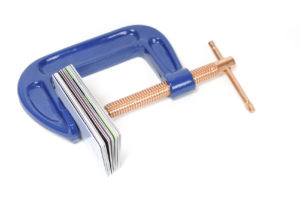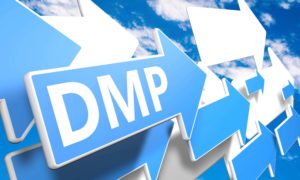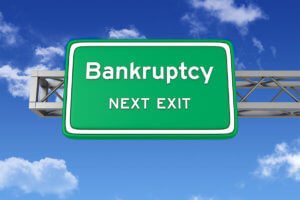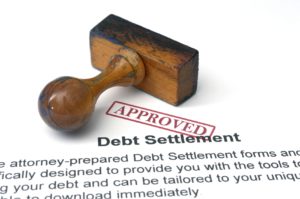Comparing Canadian Debt Solutions
Identifying the best credit card debt solution to fit your unique financial situation.
Are you in debt and wondering how you’re ever going to pay it off? You’ve come to the right place. With interest rates low for over a decade, many Canadian households find themselves carrying a lot of debt. Sometimes you can handle the monthly payments, but other times it can seem overwhelming. If you feel like you can no longer handle your monthly debt payments, that’s when it can make sense to explore debt solutions.
Canadians have a range of debt solutions that can help them get to better financial standing. The solutions we’ll look at in this guide include debt settlement, debt consolidation, credit counselling, consumer proposal and bankruptcy.
Before you make a final decision to use any of these solutions, it’s a good idea to speak to a trusted financial professional. They can take a closer look at your finances and help you identify the best debt solution for your unique financial situation.
How to Find the Right Debt Solution for You
There are five ways to solve challenges with credit card debt in Canada. This video explains what they are and what you can expect with each. How do you know which solution is best for your unique financial situation? You should talk to a trained credit counsellor.
|
Call 1-888-294-3130 or complete the form to request a free evaluation from a trained credit counsellor to find the best debt solution for you! |
Find a Solution |
Explore Debt Solutions
Every financial situation is different, so it’s important to identify the best debt solution for your needs. This depends on:
- how much you owe
- what other obligations you currently have
- your credit score
- your budget
The solution that works for a friend or neighbour may not always work in your situation, so it’s important to understand the range of options available. That way, you can make an informed decision on the best way to move forward, so you can become debt-free.
Table of Contents
Debt Consolidation
Are you tired of throwing money away on high interest charges? Do you make payments on your credit cards, but your balances never seem to go down? Would life be easier if you could just stop juggling all your credit card bills? If this sounds familiar, then consolidation may be the right solution for you to get your debts under control.
What is debt consolidation?

Debt consolidation has several benefits. You’ll only have one monthly payment to worry about. In many cases, the payment may be lower than the total of the individual debt payments you were making before you consolidated. It will also be commonly at a lower overall interest rate, leading to possibly saving thousands in interest charges and paying off your debts months or years sooner. It’s also a fixed interest rate with fixed monthly payments, which makes it easier to manage the debt.
Debt consolidation differs from debt settlement and other solutions that reduce the amount of principal that you owe. Through consolidation, you pay back everything you borrowed and charged. As such, you usually won’t save as much with debt consolidation. On the other hand, you won’t harm your credit as compared to filing for bankruptcy or making a consumer debt proposal. Your credit score may actually improve as you make your monthly debt payments and pay off your existing debts.
Debt consolidation is the best fit when…
Debt consolidation tends to make the most sense if you’re still able to meet your monthly minimum debt payments and you owe less than $20,000 in unsecured debt. If you owe more than $20,000 in debt, debt consolidation doesn’t tend to be the best fit, as the monthly payments may be too high. In that situation, you may be better off using one of the other solutions described in this guide.
The interest rate you’ll pay on your consolidated loan depends on your credit rating. If your credit score is still decent, debt consolidation can be a low-cost way to pay off your high-interest consumer debt. However, if your credit is damaged, your application may be denied or you could end up paying a higher interest rate, making consolidation not a viable option.
Debt Management Program
Are you finding it tough to keep up with your monthly debt payments? Do you feel like you’re gradually falling behind on your ever-increasing debt load? Has your credit score already been damaged by late payments or debt collections? If so, then a debt management program may be the best solution for you.
What is a debt management program?

Unlike a debt consolidation loan, you still owe your original creditors on a debt management program. The credit counselling agency simply acts as a go-between, getting your creditors to accept reduced monthly payments through the program and negotiating to get you the lowest interest rate possible.
Once you’re enrolled, you make one monthly payment to the credit counselling agency and they distribute the payment to your creditors as agreed. It’s important to recognize that a debt management program isn’t a quick-fix solution. It can take up to five years to complete the program, depending on how much debt you have and how willing your creditors are to negotiate.
Debt management is the best fit when…
A debt management program makes the most sense when you can handle your existing debts with slight changes to your interest rates and payment terms. It’s ideal when you owe more than $10,000 in consumer debt. Even if you owe more than $75,000, you may be able to successfully eliminate with a debt management plan. Enrolling in a debt management plan is not dependent on your credit score, and will be removed from your credit profile unlike filing a consumer proposal or bankruptcy. This case study shows the time and cost-savings that one consumer received from a DMP, even with a high debt level:
Kenneth from Victoria, BCExcellent company, excellent staff/people. Without these dedicated people taking care of me I would not be out of debt. Thank you for your hard and dedicated work.
Where he started:
- Total unsecured debt: $85,767.00
- Estimated interest charges: $50,575.06
- Time to payoff: 16 years, 0 months
- Total monthly payments: $3,430.68
After DMP enrollment:
- Average negotiated interest rate: 4.26%
- Total interest charges: $14,392.47
- Time to payoff: 4 years, 6 months
- Total monthly payment: $1,805.00
The trade-off for the time and cost savings of debt management is that it will generate a negative remark on your credit report. It will be noted that you’re enrolled in the program. And that notation will remain on your credit report for two years after you graduate. However, the damage this notation will do to your credit score is less damaging than other solutions, such as debt settlement and bankruptcy.
Debt Settlement
Do you owe so much that you’re worried you’ll never be able to pay everything back? Are you missing payments and watching your debts fall into collections? Do you just want to eliminate your debt so you can turn a page on your finances? In this situation, debt settlement is often the best option.
What is debt settlement?
You may have seen the advertisements that promise to settle your debts for less money than you owe. While it may seem too good to be true, it’s actually a legitimate and legal way to get out of debt. It is called debt settlement.
With settlement, you hire a debt settlement firm to negotiate with your creditors for you. A good firm will be able to get creditors to accept a lesser amount than what you owe. This will help save you money and makes it a lot easier to become debt-free.
When you enroll in a debt settlement program, you work with the settlement company to make a budget and set up a debt settlement fund. You contribute as much money as you can each month to this fund until you have enough funds to begin making settlement offers. Funds are handed over to your creditors once they approve a settlement proposed from the firm representing you. Once your creditors have officially signed off on a debt settlement agreement, the funds are paid, and the remaining balance is discharged by the creditor.
Debt settlement offers another way to get out of debt for less. You focus on paying a percentage of the principal and don’t have to worry about interest charges. It’s not uncommon for creditors to settle for less than forty cents on the dollar. If you have $10,000 in debt that means you might be able to settle for only $4,000 (plus fees to the settlement firm).
Debt settlement is the best fit when…
Debt settlement usually makes the most sense when you owe high levels of debt and don’t have a strong credit score. Settlement programs are the best fit when you owe more than $10,000 and cannot reasonably afford to pay back everything you owe within five years even with a reduced payment. It’s a viable option as long as you’re not concerned about causing more significant damage to your credit score.
Settlement programs are ideal when your debts have already fallen behind and you’re struggling just to catch up. They’re more beneficial than debt management and consolidation for any debts that you have that are in collections. If you’re not quite to the point of declaring bankruptcy or submitting formal consumer proposals, debt settlement could be the right option.
Consumer Proposal
Are you so deep in debt that you feel completely overwhelmed? Have you tried making settlement offers on your own, but your creditors aren’t willing to negotiate with you directly? Are you still trying to avoid the severe credit damage that can be caused by bankruptcy? If this is the point that you’re at with debt, then a consumer proposal may be the right debt solution for you.
What is a consumer proposal?

A consumer proposal lets you settle with your creditors for a lesser amount than you owe them. You’ll end up paying your creditors something, but most of your debt will be forgiven. In order to file a consumer proposal, the amount of unsecured debt that you have must be between $1,000 and $250,000. If you’re married, you’re allowed a maximum debt of $500,000.
A consumer proposal is essentially a halfway point between debt settlement programs and bankruptcy. Like debt settlement, you get out of debt for a percentage of what you owe. However, instead of a settlement company negotiating with your creditors, a Consumer Proposal Administrator oversees the agreements. Administrators are Licensed Insolvency Trustees.
To get the process started, you contact a trustee, who will prepare the necessary paperwork. Once the paperwork is filed, your outstanding debts will no longer accumulate interest (unless your consumer proposal is rejected). However, if your trustee and you put together a reasonable proposal, your creditors are likely to accept it.
A consumer proposal is the best fit when…
Consumer proposals make the most sense when you have too much unsecured debt to pay back within a reasonable amount of time. They’re also ideal if you have assets that you want to protect by avoiding bankruptcy.
With a consumer proposal, your minimum monthly payment is typically reduced and your interest charges are frozen. Creditors will oftentimes forgive a large portion of the debt owing to them, helping you pay off your debts sooner. The assets like your home, car and salary are protected with a consumer proposal. Creditors won’t be able to seize your assets or garnish your wages. Furthermore, once your proposal is accepted, collection agencies won’t be allowed to contact you.
However, consumer proposals aren’t the right fit for everyone. If mortgage and car payments are also causing issues with your budget, a consumer proposal won’t be able to help, since it only deals with unsecured debt.
Also, keep in mind that consumer proposals won’t give you any negotiating power. It’s the trustee’s duty to make arrangements that pay back as much of your debt as you can afford. Sometimes you may not agree with that amount, but both you and your creditors will be bound by the terms the trustee sets. But in the right circumstances, it can help you avoid bankruptcy and minimize the financial stress you’re facing because of debt.
Bankruptcy
Are you completely fed up with being in debt and want to find the fastest way out? Are your challenges with debt so bad that you are no longer concerned about credit damage? Do you just need a clean break, so you can turn the page on your finances? If so, then it may be time to file for bankruptcy.
What is bankruptcy?

As part of the bankruptcy, you turn your assets to a licensed insolvency trustee to help ensure your creditors get some of what they’re owed. Those assets will be liquidated to pay your creditors back. Both you as the debtor and your creditors receive some protection under bankruptcy proceedings.
If you’re drowning in debt and you feel like bankruptcy is the only solution, your first step should be to contact a licensed insolvency trustee in your province. In order to file for bankruptcy, you need to qualify. To qualify, you must owe $1,000 or more in unsecured debt and be unable to make your minimum monthly payment as they become due.
If you qualify, the trustee will set up a trust for your assets (with some exceptions). Your trustee is then responsible for paying your creditors directly from the trust until your bankruptcy is discharged. As long as you meet your bankruptcy requirements, most of the debts that you owe will be forgiven.
Bankruptcy is the best fit when…
Filing for bankruptcy offers many benefits. Your debts will be forgiven, and the collection calls will stop, but it comes at a cost. You will have to give up your assets that you otherwise would have been able to keep with a consumer proposal.
Secondly, your credit rating will be negatively affected for at least seven years. Bankruptcy will be noted as an R9 penalty on your credit report. This will make it very difficult for you to get a loan during this time, except at a very high interest rate.
Still, if your credit score has already hit rock bottom, bankruptcy can clear away your debt to give you a fresh start. You can focus on starting to rebuild instead of digging yourself out of the hole you’re in with debt.
Solutions that its best to avoid
There are other debt solutions that you may consider using when you have trouble making ends meet. However, in most cases, it’s better to avoid these solutions if you can. They have the potential to set you back financially, so you will have further to go to recover and regain stability.
Payday loans
Payday loans, also called short-term installment loans, come with extremely high APR, high finance charges and a high risk of overdrafts. You also have a very short window in which to pay back the debt – usually within two weeks. If you don’t pay the debt back in full, you can face APR of up to 442%.[1] This can put you in a financial hole quickly.
Learn more about the risks of payday loans »
Home equity loans
Although this is a popular form of borrowing, it decreases your net worth and can increase your risk of foreclosure. Your home is one of your greatest assets because of its equity. Equity is the value of your home minus the remaining balance on your mortgage.
There are a range of ways to borrow against the equity in your home, but most are best avoided if you have other options available. However, if you are close to the renewal date of your mortgage, many creditors may require you to tap your home equity instead of using other solutions, such as a debt management plan.
It’s important to understand how home equity and the various types of loans work before you consider tapping your most valuable asset.
Using credit counselling to find the best solution
One more option you may have heard of that can help you find debt relief is credit counselling. However, credit counselling is not a debt solution in and of itself. Instead, it’s a free service that can help you identify the best debt solution for your needs.
Consumer credit counselling services are designed to help people find the best way to get out of debt for their unique financial situation. Credit counselling always starts with a free debt and budget evaluation. A trained credit counsellor asks you about your debts, credit and budget to get a clear understanding of where you stand financially. Then they explain all the debt solutions that are available to you, so you can understand your options. Finally, they make recommendations on the best options to use, based on your financial situation, needs, and goals.
If it turns out that a debt management program is your best option to use, credit counselling agencies administer those programs for consumers. However, their primary role is to serve as an advocate and an advisor to help you identify the best solution for your needs.
With that in mind, if you’re still unsure about which debt solution would be right for you, a free credit counselling session is a good place to start.
|
Talk to a trained credit counsellor now to zero in on the right debt solution for your needs. |
Free Evaluation |
Tips for managing other types of debt
Student loan debt
Student loans have become an immense burden on Canadians. In 2015, the average student who earned a Bachelor’s or Master’s degree graduated with $28,000 in debt. This level of debt can be difficult to pay off right out of school. Many students are forced to take second jobs just to pay off their loans.
Car loan debt
While car loans aren’t a major source of financial stress for most Canadians, it’s still important to manage them effectively. Purchasing a bigger or better car than you can afford can set you back. With that in mind, we’ve put together six tips that can help you keep auto loan debt under control.




